Printing and dyeing wastewater is a kind of wastewater with high organic content, high chroma, and difficult biochemical degradation. It is one of the wastewater treatment problems. In recent years, with the development of chemical fiber fabrics, the rise of simulation technology, and advances in the finishing technology after printing and dyeing, organic materials that are difficult to biodegrade, such as PVA slurries, rayon alkalis, and new additives, have entered a large number of printing and dyeing wastewaters and have their COD concentrations. Achieve 2000-3000mg/L, so that the original biological treatment system removal rate dropped from 70% to about 50%. Even lower. Therefore, the study of economical and effective printing and dyeing wastewater treatment technology has become an important topic and necessity of environmental protection [1-3].
1 Summary of Printing and Dyeing Wastewater Treatment Methods
Printing and dyeing wastewater treatment methods include physical and chemical methods and biological methods. In the physical chemistry method, an adsorption method is commonly used, and it is a method of removing one or more substances in the waste water adsorbed on the surface of the solid by using a solid substance having a large amount of helium. The commonly used adsorbent in industry is activated carbon and the like, which is very effective for removing dissolved organic matter in water, but it cannot remove colloidal hydrophobic dye in water [4]. The coagulation and sedimentation method can reduce the chroma of the printing and dyeing wastewater and remove the dye that is in a colloidal state. Commonly used coagulants are divided into inorganic salts (such as aluminum sulfate, alum, ferric chloride, etc.) and high-molecular coagulants (such as basic aluminum chloride, polyacrylamide saddle PAM); air flotation method for printing and dyeing wastewater It contains organic colloidal particles, various opaque grease-like impurities, fine fibers, and cilia of hydrophobic synthetic fibers. The use of a coagulant for coagulation in advance leads to a better separation effect; the electrolysis method has been used in many cases for treatment. Chromium-containing and chromium-containing electroplating wastewater has been used to treat printing and dyeing wastewater in recent years. The decolorization effect of this method is significant, the amount of sludge produced is small, the processing time is short, but the power consumption and electrode material consumption are large, and it is suitable for small-water wastewater treatment. The oxidative decolorization method can be used to further decolorize the effluent of deeper color after biological treatment and coagulation treatment, mainly including chlorination, ozonation and photooxidation. In the biological treatment method, the advantages of the anaerobic method are wide range, low energy consumption, low excess sludge, and strong shock load resistance. The disadvantages are that the equipment has a long start-up time and the quality of the effluent cannot meet the standards, and further processing is required. Activated sludge method is a main method of aerobic biological treatment. It uses the adsorption and oxidation of activated sludge to remove organic pollutants in wastewater. The biofilm method is another aerobic biological treatment method juxtaposed with the activated sludge method. This method treats waste water through biofilms grown on the surfaces of fillers, such as filter media and disk surfaces, mainly including biological contact oxidation and biological turntables. And bio-char method.
2 Project Examples
2.1 Water quality and quantity Printing and dyeing wastewater from a certain printing and dyeing plant in the Pearl River Delta, with a treatment scale of 36,000 m/d. The designed influent water quality and effluent are shown in Table 1. The effluent requirements meet the first-level standard of the second period in the "Guangdong Provincial Local Standard Water Pollutant Emission Limit" (DB44/26-2001). 
2.2 Process Flow
The conventional treatment methods of printing and dyeing wastewater are generally divided into biochemical + physicochemical and physicochemical + biochemical treatment processes. However, due to the lack of hydrolysis acidification unit, the aerobic biochemical unit reaction in the actual operation is not thorough enough, resulting in high physicochemical treatment costs. . Adding the "hydrolysis + aerobic" series process of hydrolytic acidification in front of the traditional aerobic biological treatment device can make the organic substances that are difficult to degrade in the printing and dyeing wastewater hydrolyze to generate more easily biodegradable substances and improve the biodegradability of the wastewater. Degradability, thereby increasing the COD removal rate of traditional processes. At present, many domestic newly-built printing and dyeing wastewater treatment devices (including domestic sewage and dyeing and printing wastewater treatment) adopt the “hydrolysis-aerobic†biological treatment process developed by this process, and have achieved significant environmental and economic benefits.
Based on the above analysis and combined with the actual situation, the integrated wastewater treatment process is presented in Figure 1. 
2.2.1 Anaerobic hydrolysis
Dyes are hardly degradable synthetic organic substances, and their molecular structures mainly contain electron-diffusing electron-adsorbing groups such as azo groups. If the electron-attracting substituents on the molecular structure can be removed and the electron double-strands are broken, the subsequent biodegradation will be easy and the dye molecules will lose the chromophoric groups. The mechanism of hydrolysis acidification to degrade dye organics and decolorization is to break the azo-based electronic double strands using the enzymatic action of hydrolytic acidifying microorganisms. This biodegradation process requires the participation of multiple enzymes. Hydrolysis, hydrolysis
Pseudomonas spp., Aeromonas spp. and Rhodospirillum sp. which grow in the sludge have better decolorization ability. The decolorization ability of the mixed flora is higher than that of the individual strains, and the mixed bacteria groups rely on the synergistic effect, so that the degradation of the dye is more complete and the decolorization is more thorough.
Hydrolysis and acidification treatment can buffer and reduce the pH of the original sewage, increase the proportion of soluble COD in the sewage, improve the COD removal rate of subsequent aerobic treatment, and also can buffer and adjust the impact load that may occur, prevent and overcome Sludge swelling or filamentous growth may occur during the subsequent process of activated sludge treatment to enhance the stability and reliability of the treatment system.
2.2.2 Jet aeration
The key equipment of the aerobic biochemical system is the oxygenation system. The jet aeration overcomes the disadvantages of high energy consumption and low power efficiency of the traditional jet aerator, greatly improves the oxygenation capacity, and reduces the power consumption; it avoids the high pressure blower. The resulting noise pollution eliminates the influence of surface active substances in the sewage on the oxygen transfer rate, and the oxygen transfer rate is greatly increased. The stroke range of the downward jet can be up to 10m or more, so the depth of the pool can reach a maximum of 10 to 14m, which not only saves The floor space allows the full use of the energy provided by pumps and fans;
2.2.3 Air flotation separation
Air-floatation and water purification technology is a new method for rapid and efficient separation of liquids in the field of water treatment. It relies on the introduction of numerous micro-bubbles in the water to adhere impurities in the water, causing its overall specific gravity to be less than water and floating to the surface of the water, thus achieving separation from the liquid.
The pressure dissolved gas floats the air under the action of certain pressure, dissolves in the water and reaches supersaturated state, and then suddenly reduces the water to atmospheric pressure. At this moment, the air dissolved in the water comes in the form of tiny bubbles. The escape of water to complete the floatation process. Air bubbles formed by dissolved air flotation, particle size is very small, its initial particle size is about 1 to 01. ~m or so. The contact time between air bubbles and water can be controlled as needed. Therefore, the purification efficiency of dissolved air flotation is high.
2.2.4 Coagulation gas float
Printing and dyeing wastewater has poor biodegradability, and it is generally difficult to achieve emission requirements only by biochemical treatment. In order to ensure stable discharge of the final effluent, and to prevent accidents in the biochemical system, a materialization process is added after the biochemical system. By adding a coagulant or bleaching agent, the remaining color in the wastewater is removed, and colloidal substances can be converted into suspended solids, which can be separated and removed from the water together with the smaller and lighter suspensions remaining in the wastewater. It also removes metabolites from some of the bacteria to ensure optimal treatment. After the coagulation of the dosing agent, there are two kinds of separation, namely sedimentation and air flotation. Among them, pressure dissolved air flotation has better decolorization effect on the treatment of dyeing wastewater. In addition, because the flotation separation capacity is approximately 4 to 5 times of the precipitation separation capacity, the area of ​​the separation zone can be greatly reduced, a large amount of investment can be saved, and the separation effect can be stabilized without being affected by the external environment.
Select pressure dissolved gas float method as a physical treatment measures.
2.3 Major Structures
The main structures are shown in Table 2. 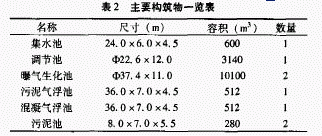
Anaerobic hydrolysis reactors can be divided into three categories: anaerobic activated sludge, anaerobic biofilm, and synthesis. Due to the large amount of water, the use of anaerobic biofilm method requires a large amount of packing, which greatly increases the investment cost. Because the water quality concentration is not high, the anaerobic activated sludge method alone is used to make the commissioning time very long, and it is also impossible to avoid sudden mud turning. Considering the above factors comprehensively, using a combination (UBF) reactor combined with anaerobic activated sludge and anaerobic biofilm methods, the advantages of anaerobic filter (AF) and anaerobic sludge blanket (UASB) can be improved. running result. Hydrodynamic residence time is controlled within 10h.
The aerobic reactor is an aerated biochemical pond with two qb37.4×11.0m depths of 10.5m and a total effective volume of 20000m'. According to the requirement of daily treatment of 36000m, the hydraulic retention time is 13h, which can satisfy Processing requirements.
Air flotation is divided into two units: activated sludge flotation return and coagulation air flotation. The former's operation effect determines the sludge concentration of the aeration tank, and the latter's operation effect determines the final water quality. At present, pressurized dissolved air flotation is the most commonly used air flotation method at home and abroad. The pressure dissolved gas floatation process consists of three parts: a pressure dissolved gas system, a dissolved gas release system, and an air floatation separation system.
The pressure dissolved gas system includes water pumps, air compressors, pressure dissolved gas tanks and other ancillary equipment. The pressure dissolved gas tank is the key equipment that affects the effect of dissolved gas. At present, the most widely used is the use of air compressor air supply. The amount of air required for air floatation is less, and air compressors with low power may be used to operate intermittently. In addition, the supply of air compressor can also ensure that the pressure of the water pump will not be lost. Generally, the pressure from the water pump to the dissolve tank is about 0.5 MPa, so it can save energy. In order to improve the efficiency of dissolved gas, most of them use spray packing pressure dissolved gas tanks.
The dissolved gas release system is generally composed of a releaser (or perforated tube, pressure relief valve) and a dissolved air line. The function of the dissolved gas releaser is to disperse the pressure dissolved gas through energy dissipation and depressurization, so that the dissolved gas is released in the form of microbubbles, and can quickly and uniformly adhere to the impurities in the water.
The main process parameters of the dissolved gas releaser are: the flow rate of the pipe before the release device: 1m/s or less, and the outlet flow rate of the release device is 0. 4-0.5m/s is appropriate: the opening degree of the narrow gap during the flushing is 5mm; the range of action of each releaser is 30-100em. Air flotation separation system. Generally can be divided into advection, vertical and integrated. Its function is to ensure a certain volume and the surface area of ​​the pool, so that the microbubble group and the flocks in the water are fully mixed, contacted and adhered, so as to ensure separation of the flocculated body with air flocculation.
2.4 Operational Technical Requirements and Results 
The results of water quality monitoring at 3 months of operation are shown in Table 3 (Average). From the monitoring results, it can be seen that the quality of effluent water is better than the first-level standard in the second period of time in the “Guangdong Provincial Local Standard Water Pollutant Emission Limit†(DB44/26-2001).
3 Conclusions and recommendations
(1) Practice has proved that anaerobic hydrolysis + jet aeration + air flotation + coagulation air flotation process has a good effect on the treatment of printing and dyeing wastewater.
(2) Temperature is an important factor affecting the biodegradability of wastewater. After analysis of changes in wastewater temperature, the average water temperature in the incoming pond is 40~C. This temperature will still affect the treatment effect of the biochemical system. Therefore, the wastewater needs to be reduced to 38. °C can enter the hydrolysis acidification pool.
(3) Printing and dyeing wastewater is difficult to biodegrade due to certain dyes, resulting in a low B/C ratio, usually about 0.3. The wastewater is subjected to hydrolysis and acidification in an anaerobic hydrolysis tank. This type of wastewater B/ The C ratio can be increased to about 0.35.
(4) In printing and dyeing wastewater, sulfide concentration and sulfate concentration will affect the biodegradability of wastewater. When the sulfide concentration is lower than 20 mg/L, it will not inhibit the biochemical reactions of acidified bacteria and aerobic bacteria. The main effect of sulfate on biochemical system is that it will be reduced to inhibitory hydrogen sulfide under the action of anaerobic bacteria, but its concentration is within lg/L will not have a great impact on the biochemical system, in addition, the hydrolysis acidification pool The residence time should be short, then anaerobic bacteria will not become dominant microorganisms, in order to ensure that the sulfate concentration will not affect the biochemical system.
Printing and dyeing wastewater is a kind of wastewater with high organic content, high chroma, and difficult biochemical degradation. It is one of the wastewater treatment problems. In recent years, with the development of chemical fiber fabrics, the rise of simulation technology, and advances in the finishing technology after printing and dyeing, organic materials that are difficult to biodegrade, such as PVA slurries, rayon alkalis, and new additives, have entered a large number of printing and dyeing wastewaters and have their COD concentrations. Achieve 2000-3000mg/L, so that the original biological treatment system removal rate dropped from 70% to about 50%. Even lower. Therefore, the study of economical and effective printing and dyeing wastewater treatment technology has become an important topic and necessity of environmental protection [1-3].
1 Summary of Printing and Dyeing Wastewater Treatment Methods
Printing and dyeing wastewater treatment methods include physical and chemical methods and biological methods. In the physical chemistry method, an adsorption method is commonly used, and it is a method of removing one or more substances in the waste water adsorbed on the surface of the solid by using a solid substance having a large amount of helium. The commonly used adsorbent in industry is activated carbon and the like, which is very effective for removing dissolved organic matter in water, but it cannot remove colloidal hydrophobic dye in water [4]. The coagulation and sedimentation method can reduce the chroma of the printing and dyeing wastewater and remove the dye that is in a colloidal state. Commonly used coagulants are divided into inorganic salts (such as aluminum sulfate, alum, ferric chloride, etc.) and high-molecular coagulants (such as basic aluminum chloride, polyacrylamide saddle PAM); air flotation method for printing and dyeing wastewater It contains organic colloidal particles, various opaque grease-like impurities, fine fibers, and cilia of hydrophobic synthetic fibers. The use of a coagulant for coagulation in advance leads to a better separation effect; the electrolysis method has been used in many cases for treatment. Chromium-containing and chromium-containing electroplating wastewater has been used to treat printing and dyeing wastewater in recent years. The decolorization effect of this method is significant, the amount of sludge produced is small, the processing time is short, but the power consumption and electrode material consumption are large, and it is suitable for small-water wastewater treatment. The oxidative decolorization method can be used to further decolorize the effluent of deeper color after biological treatment and coagulation treatment, mainly including chlorination, ozonation and photooxidation. In the biological treatment method, the advantages of the anaerobic method are wide range, low energy consumption, low excess sludge, and strong shock load resistance. The disadvantages are that the equipment has a long start-up time and the quality of the effluent cannot meet the standards, and further processing is required. Activated sludge method is a main method of aerobic biological treatment. It uses the adsorption and oxidation of activated sludge to remove organic pollutants in wastewater. The biofilm method is another aerobic biological treatment method juxtaposed with the activated sludge method. This method treats waste water through biofilms grown on the surfaces of fillers, such as filter media and disk surfaces, mainly including biological contact oxidation and biological turntables. And bio-char method.
2 Project Examples
2.1 Water quality and quantity Printing and dyeing wastewater from a certain printing and dyeing plant in the Pearl River Delta, with a treatment scale of 36,000 m/d. The designed influent water quality and effluent are shown in Table 1. The effluent requirements meet the first-level standard of the second period in the "Guangdong Provincial Local Standard Water Pollutant Emission Limit" (DB44/26-2001). 
2.2 Process Flow
The conventional treatment methods of printing and dyeing wastewater are generally divided into biochemical + physicochemical and physicochemical + biochemical treatment processes. However, due to the lack of hydrolysis acidification unit, the aerobic biochemical unit reaction in the actual operation is not thorough enough, resulting in high physicochemical treatment costs. . Adding the "hydrolysis + aerobic" series process of hydrolytic acidification in front of the traditional aerobic biological treatment device can make the organic substances that are difficult to degrade in the printing and dyeing wastewater hydrolyze to generate more easily biodegradable substances and improve the biodegradability of the wastewater. Degradability, thereby increasing the COD removal rate of traditional processes. At present, many domestic newly-built printing and dyeing wastewater treatment devices (including domestic sewage and dyeing and printing wastewater treatment) adopt the “hydrolysis-aerobic†biological treatment process developed by this process, and have achieved significant environmental and economic benefits.
Based on the above analysis and combined with the actual situation, the integrated wastewater treatment process is presented in Figure 1. 
2.2.1 Anaerobic hydrolysis
Dyes are hardly degradable synthetic organic substances, and their molecular structures mainly contain electron-diffusing electron-adsorbing groups such as azo groups. If the electron-attracting substituents on the molecular structure can be removed and the electron double-strands are broken, the subsequent biodegradation will be easy and the dye molecules will lose the chromophoric groups. The mechanism of hydrolysis acidification to degrade dye organics and decolorization is to break the azo-based electronic double strands using the enzymatic action of hydrolytic acidifying microorganisms. This biodegradation process requires the participation of multiple enzymes. Hydrolysis, hydrolysis
Pseudomonas spp., Aeromonas spp. and Rhodospirillum sp. which grow in the sludge have better decolorization ability. The decolorization ability of the mixed flora is higher than that of the individual strains, and the mixed bacteria groups rely on the synergistic effect, so that the degradation of the dye is more complete and the decolorization is more thorough.
Hydrolysis and acidification treatment can buffer and reduce the pH of the original sewage, increase the proportion of soluble COD in the sewage, improve the COD removal rate of subsequent aerobic treatment, and also can buffer and adjust the impact load that may occur, prevent and overcome Sludge swelling or filamentous growth may occur during the subsequent process of activated sludge treatment to enhance the stability and reliability of the treatment system.
2.2.2 Jet aeration
The key equipment of the aerobic biochemical system is the oxygenation system. The jet aeration overcomes the disadvantages of high energy consumption and low power efficiency of the traditional jet aerator, greatly improves the oxygenation capacity, and reduces the power consumption; it avoids the high pressure blower. The resulting noise pollution eliminates the influence of surface active substances in the sewage on the oxygen transfer rate, and the oxygen transfer rate is greatly increased. The stroke range of the downward jet can be up to 10m or more, so the depth of the pool can reach a maximum of 10 to 14m, which not only saves The floor space allows the full use of the energy provided by pumps and fans;
2.2.3 Air flotation separation
Air-floatation and water purification technology is a new method for rapid and efficient separation of liquids in the field of water treatment. It relies on the introduction of numerous micro-bubbles in the water to adhere impurities in the water, causing its overall specific gravity to be less than water and floating to the surface of the water, thus achieving separation from the liquid.
The pressure dissolved gas floats the air under the action of certain pressure, dissolves in the water and reaches supersaturated state, and then suddenly reduces the water to atmospheric pressure. At this moment, the air dissolved in the water comes in the form of tiny bubbles. The escape of water to complete the floatation process. Air bubbles formed by dissolved air flotation, particle size is very small, its initial particle size is about 1 to 01. ~m or so. The contact time between air bubbles and water can be controlled as needed. Therefore, the purification efficiency of dissolved air flotation is high.
2.2.4 Coagulation gas float
Printing and dyeing wastewater has poor biodegradability, and it is generally difficult to achieve emission requirements only by biochemical treatment. In order to ensure stable discharge of the final effluent, and to prevent accidents in the biochemical system, a materialization process is added after the biochemical system. By adding a coagulant or bleaching agent, the remaining color in the wastewater is removed, and colloidal substances can be converted into suspended solids, which can be separated and removed from the water together with the smaller and lighter suspensions remaining in the wastewater. It also removes metabolites from some of the bacteria to ensure optimal treatment. After the coagulation of the dosing agent, there are two kinds of separation, namely sedimentation and air flotation. Among them, pressure dissolved air flotation has better decolorization effect on the treatment of dyeing wastewater. In addition, because the flotation separation capacity is approximately 4 to 5 times of the precipitation separation capacity, the area of ​​the separation zone can be greatly reduced, a large amount of investment can be saved, and the separation effect can be stabilized without being affected by the external environment.
Select pressure dissolved gas float method as a physical treatment measures.
2.3 Major Structures
The main structures are shown in Table 2. 
Anaerobic hydrolysis reactors can be divided into three categories: anaerobic activated sludge, anaerobic biofilm, and synthesis. Due to the large amount of water, the use of anaerobic biofilm method requires a large amount of packing, which greatly increases the investment cost. Because the water quality concentration is not high, the anaerobic activated sludge method alone is used to make the commissioning time very long, and it is also impossible to avoid sudden mud turning. Considering the above factors comprehensively, using a combination (UBF) reactor combined with anaerobic activated sludge and anaerobic biofilm methods, the advantages of anaerobic filter (AF) and anaerobic sludge blanket (UASB) can be improved. running result. Hydrodynamic residence time is controlled within 10h.
The aerobic reactor is an aerated biochemical pond with two qb37.4×11.0m depths of 10.5m and a total effective volume of 20000m'. According to the requirement of daily treatment of 36000m, the hydraulic retention time is 13h, which can satisfy Processing requirements.
Air flotation is divided into two units: activated sludge flotation return and coagulation air flotation. The former's operation effect determines the sludge concentration of the aeration tank, and the latter's operation effect determines the final water quality. At present, pressurized dissolved air flotation is the most commonly used air flotation method at home and abroad. The pressure dissolved gas floatation process consists of three parts: a pressure dissolved gas system, a dissolved gas release system, and an air floatation separation system.
The pressure dissolved gas system includes water pumps, air compressors, pressure dissolved gas tanks and other ancillary equipment. The pressure dissolved gas tank is the key equipment that affects the effect of dissolved gas. At present, the most widely used is the use of air compressor air supply. The amount of air required for air floatation is less, and air compressors with low power may be used to operate intermittently. In addition, the supply of air compressor can also ensure that the pressure of the water pump will not be lost. Generally, the pressure from the water pump to the dissolve tank is about 0.5 MPa, so it can save energy. In order to improve the efficiency of dissolved gas, most of them use spray packing pressure dissolved gas tanks.
The dissolved gas release system is generally composed of a releaser (or perforated tube, pressure relief valve) and a dissolved air line. The function of the dissolved gas releaser is to disperse the pressure dissolved gas through energy dissipation and depressurization, so that the dissolved gas is released in the form of microbubbles, and can quickly and uniformly adhere to the impurities in the water.
The main process parameters of the dissolved gas releaser are: the flow rate of the pipe before the release device: 1m/s or less, and the outlet flow rate of the release device is 0. 4-0.5m/s is appropriate: the opening degree of the narrow gap during the flushing is 5mm; the range of action of each releaser is 30-100em. Air flotation separation system. Generally can be divided into advection, vertical and integrated. Its function is to ensure a certain volume and the surface area of ​​the pool, so that the microbubble group and the flocks in the water are fully mixed, contacted and adhered, so as to ensure separation of the flocculated body with air flocculation.
2.4 Operational Technical Requirements and Results 
The results of water quality monitoring at 3 months of operation are shown in Table 3 (Average). From the monitoring results, it can be seen that the quality of effluent water is better than the first-level standard in the second period of time in the “Guangdong Provincial Local Standard Water Pollutant Emission Limit†(DB44/26-2001).
3 Conclusions and recommendations
(1) Practice has proved that anaerobic hydrolysis + jet aeration + air flotation + coagulation air flotation process has a good effect on the treatment of printing and dyeing wastewater.
(2) Temperature is an important factor affecting the biodegradability of wastewater. After analysis of changes in wastewater temperature, the average water temperature in the incoming pond is 40~C. This temperature will still affect the treatment effect of the biochemical system. Therefore, the wastewater needs to be reduced to 38. °C can enter the hydrolysis acidification pool.
(3) Printing and dyeing wastewater is difficult to biodegrade due to certain dyes, resulting in a low B/C ratio, usually about 0.3. The wastewater is subjected to hydrolysis and acidification in an anaerobic hydrolysis tank. This type of wastewater B/ The C ratio can be increased to about 0.35.
(4) In printing and dyeing wastewater, sulfide concentration and sulfate concentration will affect the biodegradability of wastewater. When the sulfide concentration is lower than 20 mg/L, it will not inhibit the biochemical reactions of acidified bacteria and aerobic bacteria. The main effect of sulfate on biochemical system is that it will be reduced to inhibitory hydrogen sulfide under the action of anaerobic bacteria, but its concentration is within lg/L will not have a great impact on the biochemical system, in addition, the hydrolysis acidification pool The residence time should be short, then anaerobic bacteria will not become dominant microorganisms, in order to ensure that the sulfate concentration will not affect the biochemical system.
Our lace factory with clean production environment, serious and responsible machine operation staff, not only that, we have five machine professional technical personnel, to ensure the high-efficiency and stability of the workshop is to produce the production.
Production description:
Product Name:Lace Collar/polyester lace/Cotton lace
Material:100% cotton&polyester
Size:Depond on customer request
Color:Depond on customer`s artwork
Order:OEM&ODM is available
Quality:Check piece by piece before shipment
Packaging Details
1. Inner packing: 10-15pcs pack in a polybag and bubble outside
2.Outer packing: Standard export carton
3.Can be changed as the clients' request
For High quality water soluble 100% cotton blouse lace collar neckline
More designs:
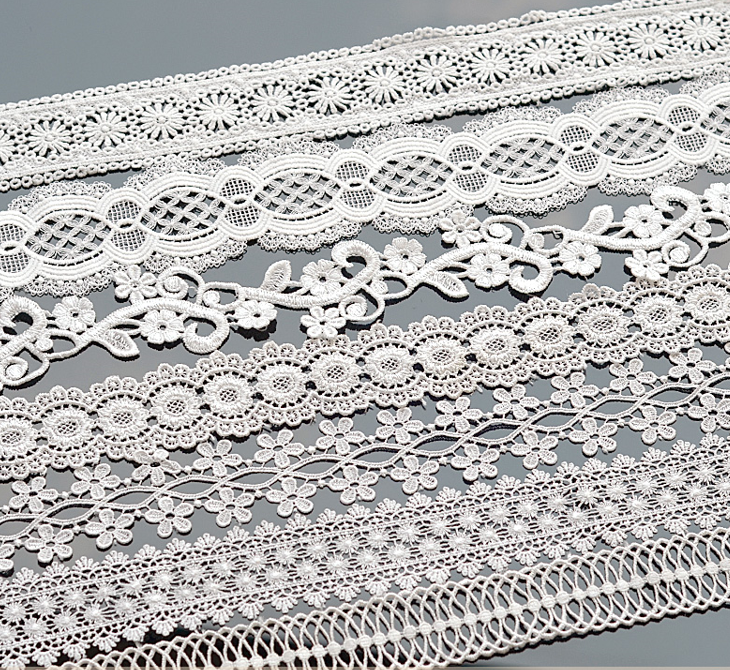
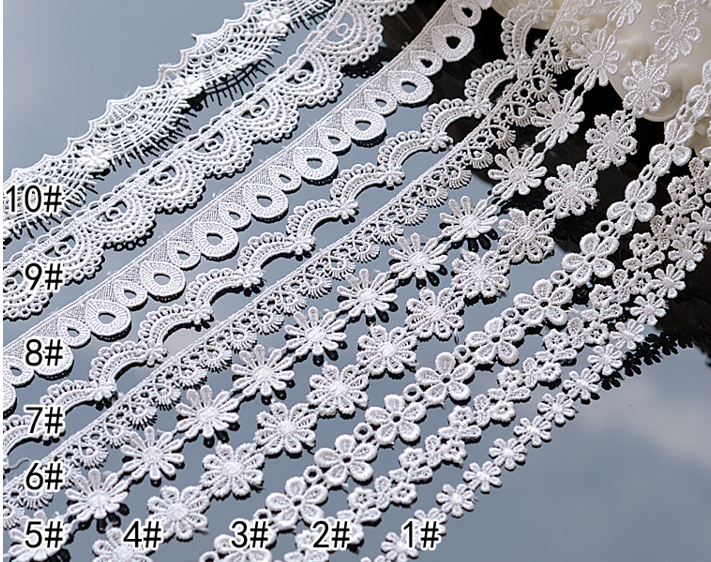
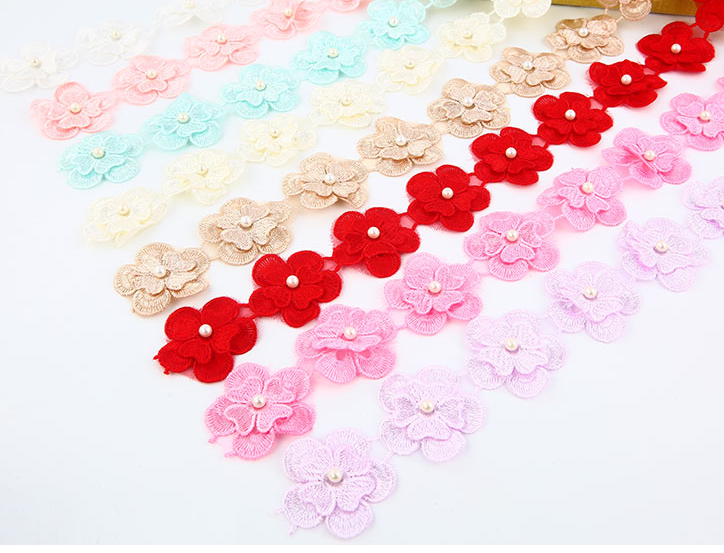

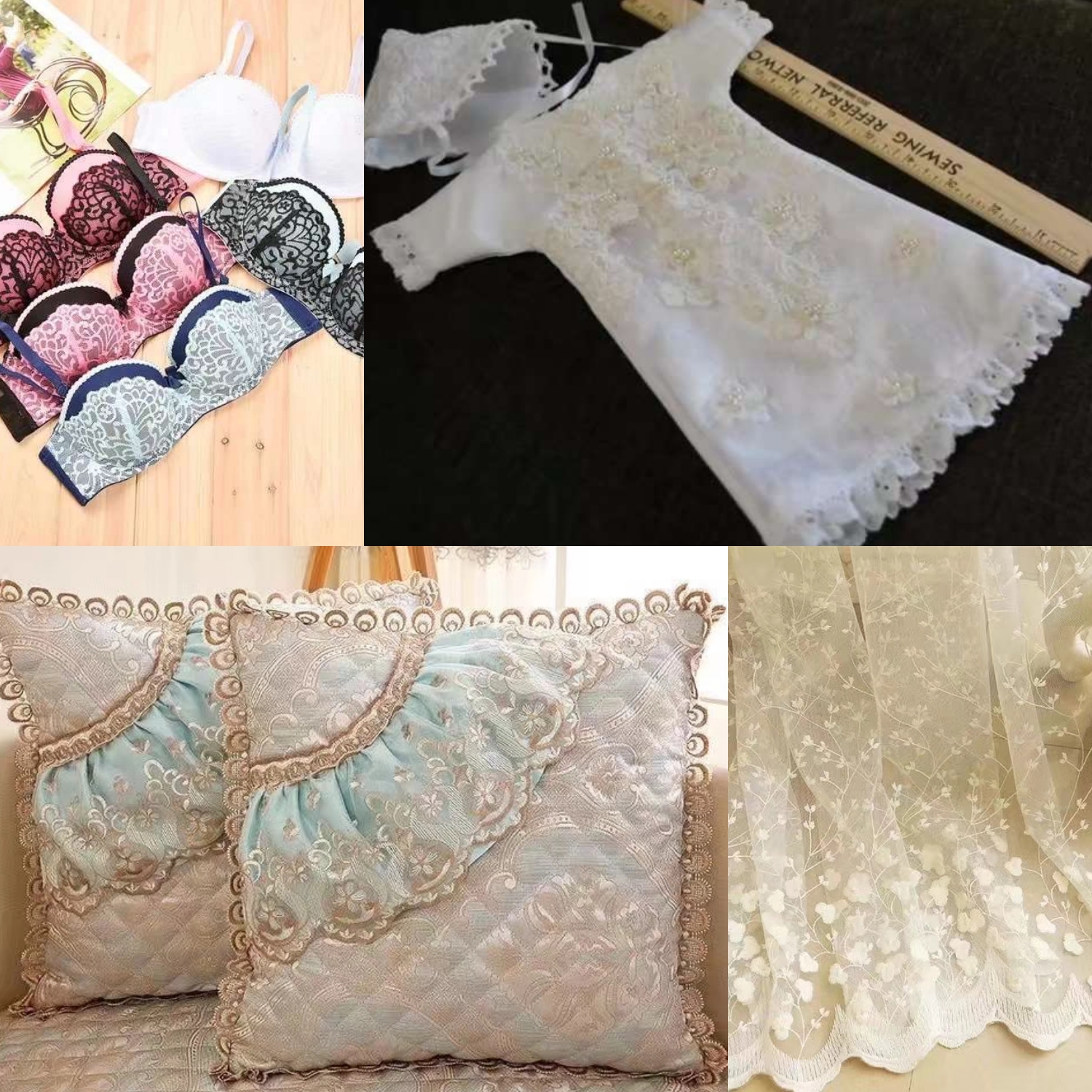

Embroidery Lace Trimmig,Wedding Lace Fabric,Guipure Embroidery Lace Trim,Polyester Chemical Lace Trimming
DONGGUAN SHITAI ACCESSORY TEXTILES CO.,LTD , http://www.stsewingcraft.com